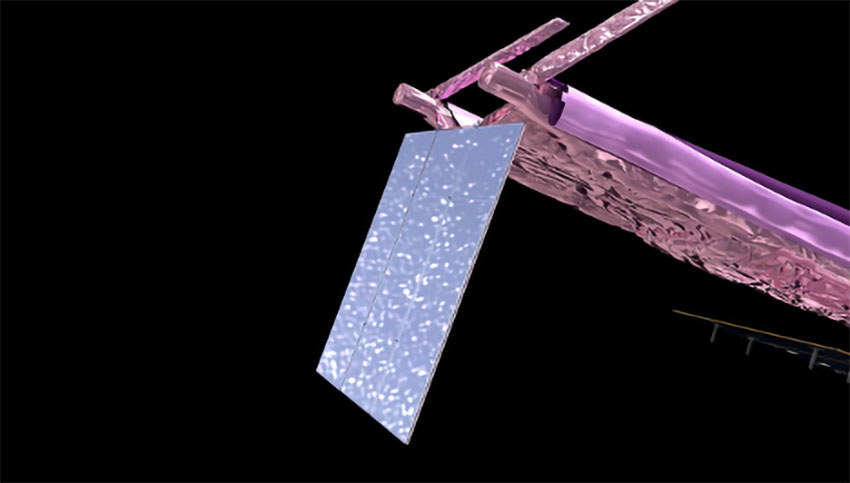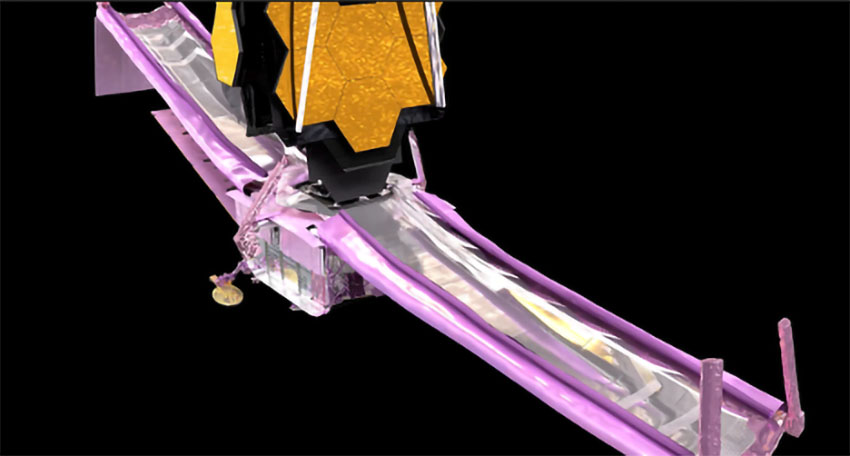Day 5: Webb’s Aft Momentum Flap and Sunshield Covers Deployed
The Webb team at the Mission Operations Center (MOC) at Space Telescope Science Institute (STScI) in Baltimore, Maryland started the day with an early morning deployment. The Aft Momentum Flap was successfully lowered into its final position. The deployment was finished at 9:00 am EST.

Why is this little flap so important? Mark McCaughrean of the Webb Science Working Group posted a great explanation on twitter this morning:
“JWST is a very big spacecraft, its sunshield about the size of a tennis court. That means the solar radiation pressure on it is relatively significant. That provides a small amount of thrust, like with a solar sail. But if the centre of light pressure & the centre of mass of the spacecraft are offset, then the radiation pressure can also cause a torque, leading to rotation of the spacecraft. This isn’t good if you’re trying to keep the telescope steady to observe a piece of the sky.”
In order to keep Webb steady, it has heavy “reaction wheels” that spin to counterbalance the observatory. However, they can only handle so much momentum, and then will need to be reset by the spacecraft firing in the opposite direction once a week.
Mark continues, “And that’s where the aft momentum flap being deployed today comes in. It is designed as a kind of trim tab, adding a bit more surface area for the solar radiation pressure to work against. Its size, angle, & location at the end of the aft sunshield pallet is calculated to move the overall observatory centres of light pressure & mass as close together as possible (in the key axes at least), to minimise the torque & thus the angular momentum build-up.”
In short, the flap will help steady the telescope and save fuel. A lot of benefit from a small flap!
You can read the entire thread on twitter here.
In today’s second major deployment, Webb’s sunshield covers were successfully rolled back to expose the sunshield membranes.

The cover deployments, which took about an hour, concluded just before 12:30 pm EST. The sunshield is now ready for its full deployment, which will take place over the next 3 days.
